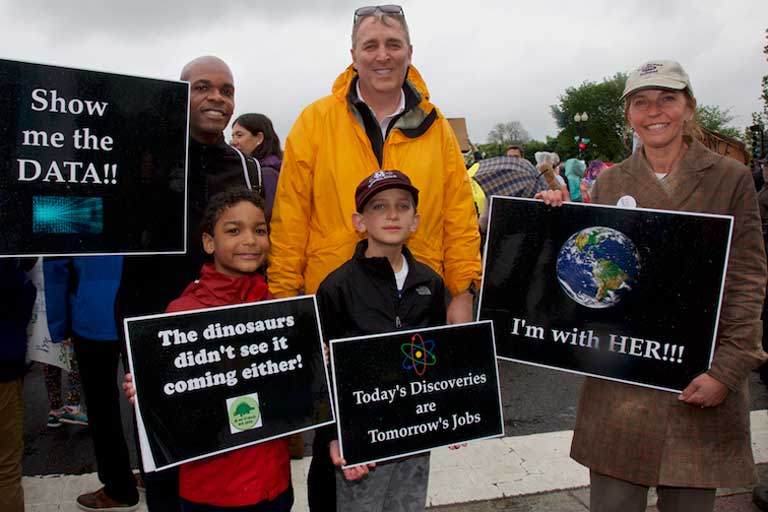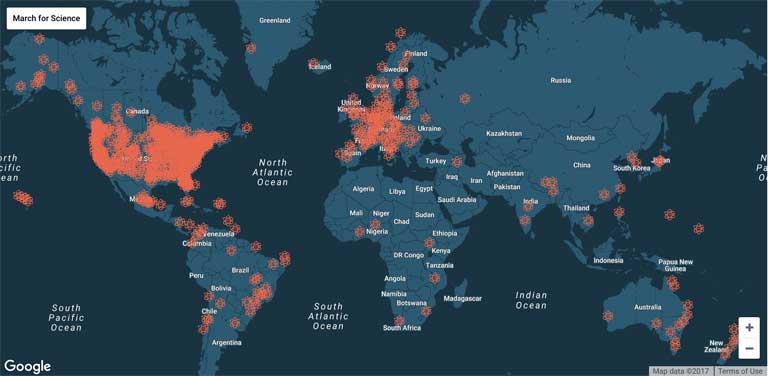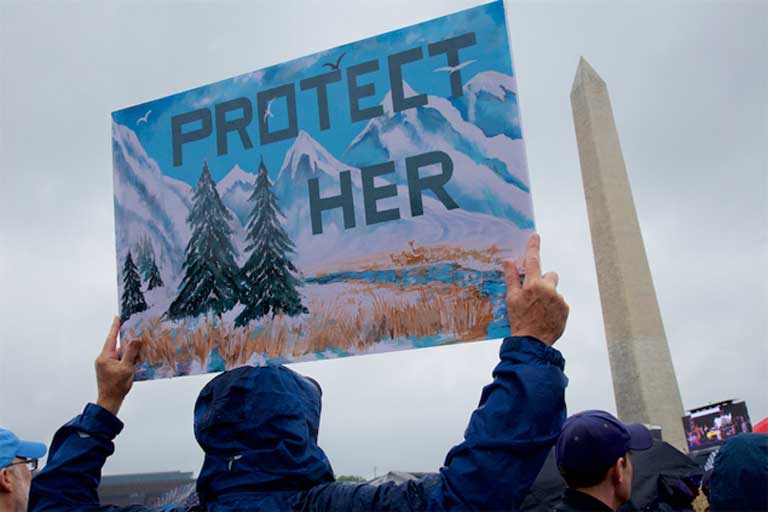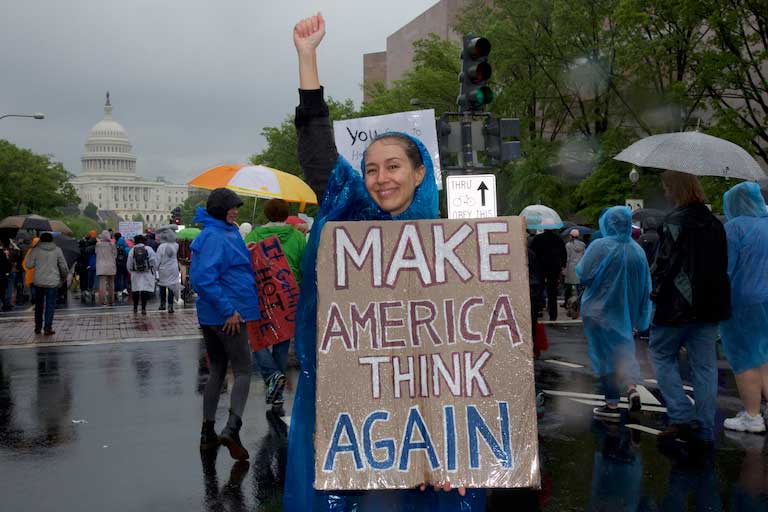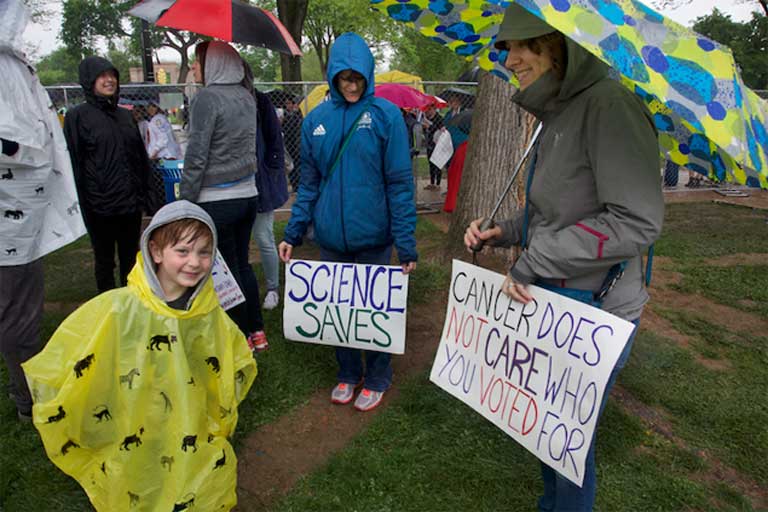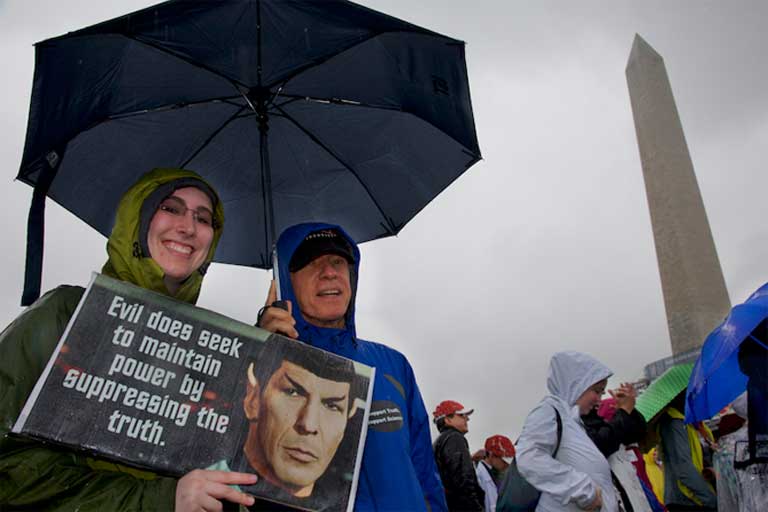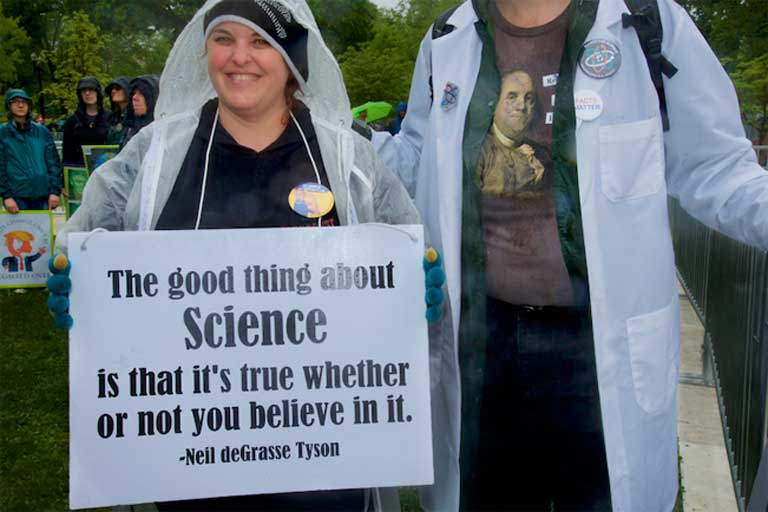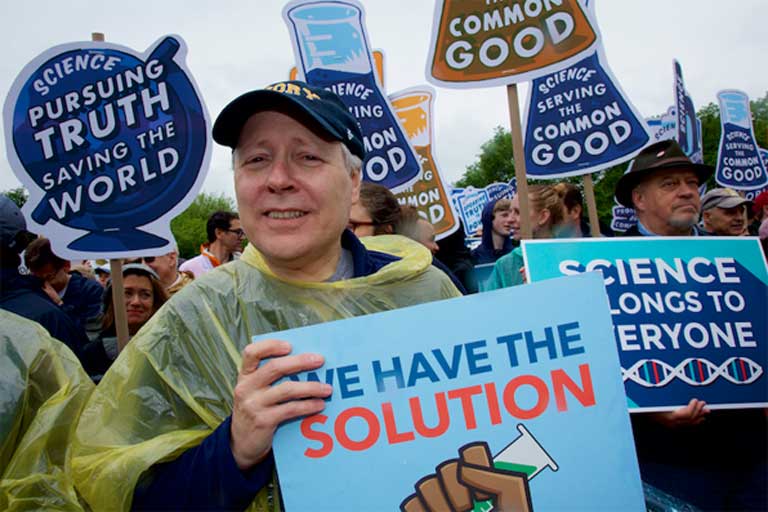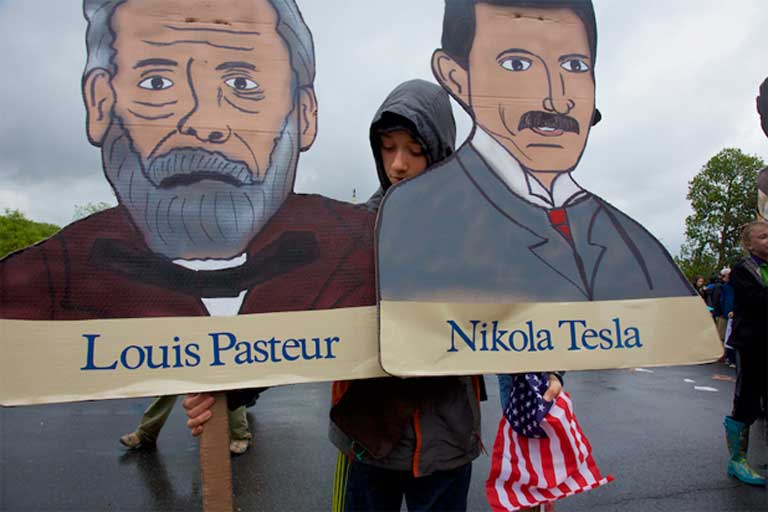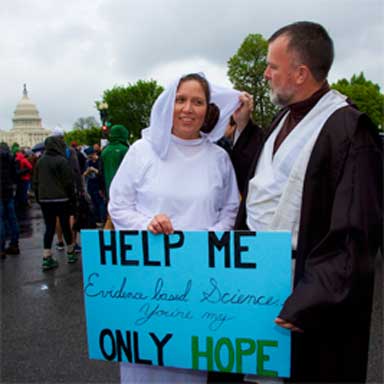- On Saturday, April 22nd tens of thousands of protestors defied bone chilling rain to march on Washington D.C., while fellow marchers protested at “March for Science” events across America and around the world.
- The D.C. march, attended by prominent scientists and supporters of science, was held in opposition to the anti-science policies of Congress and the Trump administration — which has proposed draconian cuts at the Environmental Protection Agency, and a virtual shutdown of U.S. climate research.
- Michael Mann, the director of the Earth System Science Center at Penn State University, summed up the purpose of the march: “to insure that policy is informed by an objective assessment of scientific evidence.“
- Caroline Weinberg, co-founder of the U.S. March for Science, noted that: “Science extends our lives, protects our planet, puts food on our table [and] contributes to the economy.… [P]olicymakers threaten our present and future by ignoring scientific evidence.”
The marchers didn’t stop all day, defiant of the chill and the rain, the Trump administration and Congress:
“We’re nerds. We’re wet. We’re really, really upset!”
“We don’t care what they say, we still need the EPA!”
“What do we want? Science! When do we want it? After peer review!”
“Build labs not walls!”
These and other chants reverberated through the streets of Washington, D.C., during Saturday’s first-ever “March for Science.” Despite cold, drenching rains, thousands of scientists and supporters rallied to back funding for science research — and to defend the key role that science plays in human health and safety, and a healthy environment and economy. The event, staged on the 47th anniversary of Earth Day, drew people from across the nation.
There was a particular distinction to this crowd: many of the demonstrators were garbed in white lab coats. More than 200 health, science and environmental organizations backed the rally — with many of their representatives coming from afar. Debra Akin, a biological scientist at the University of Florida, traveled to D.C. to voice opposition to the Trump administration’s anti-science agenda, which includes billions of dollars in proposed budget cuts for science and health research initiatives.
“I’ve been in science for 44 years,” she said, and this is the first time I’ve ever felt I needed to defend science.” She was one of many who emphasized that while the rally was political, science isn’t partisan. “When policy makers base their decisions on the best science-based research, all benefit,” she said.
Protesters carried signs depicting everything from drowning polar bears and talking forests, to beakers, test tubes, microscopes and famous scientists: Albert Einstein, Louis Pasteur, Sally Ride and Neil de Grasse Tyson were all represented.
Signs addressed the gamut of science and health issues: “Cancer Does Not Care Who You Voted For”, “Make America Smart Again”, “A Woman’s Place is in the Lab”, “Make America Green Again”, and “Science Is True Whether You Believe In It Or Not.”
Many like one that said “The Dinosaurs Never Saw That Asteroid Coming. What’s Our Excuse?”, addressed the need for action on climate change. Others were more political: “Keep Your Tiny Hands Off The EPA.” One simply read: “I like turtles.”
Science is under assault as never before, declared Michael Mann, one of many scientists and experts who spoke from a stage beside the Washington Monument. Mann, the director of the Earth System Science Center at Penn State University, emphasized the urgent need “to insure that policy is informed by an objective assessment of scientific evidence.“
Bill Nye “the Science Guy” also addressed the crowd, offering pointed criticism of U.S. and global policymakers: “Today we have a great many lawmakers, not just here, but around the world, deliberately ignoring and actively bypassing science,” he told marchers. “Their inclination is misguided, and in no one’s best interest.”
Nye led off the D.C. march. Throughout the day, he was treated like a rock star.

The rally was part of a larger global event that included 600-plus satellite marches on seven continents: in Antarctica researchers at the Neumayer-Station research center waved a sign and tweeted support.
Organizers view these rallies as a first step in what they call a “global movement” to defend public policy that is based on solid scientific evidence.
In Washington and across the country, protestors came out to oppose deregulation and funding cuts proposed by President Trump that would axe science, health and environmental programs — and even gut entire agencies.
Dennis Hayes, coordinator of the first Earth Day in 1970, highlighted some key issues with questions for the crowd: “Did America vote to melt the polar ice caps, kill the coral reefs and acidify the oceans? Did we vote to reduce the EPA’s research budget by a whopping 31 percent? Did we vote to defund safe drinking water by one-third? Well that’s what we got.” He said that President Trump is “basically trying to roll back everything that we’ve tried to do in the last half-century.”
Under the president’s proposed budget, the Environmental Protection Agency (EPA) would lose about a quarter of its agency’s 15,000 employees. Fifty EPA programs are on the chopping block; they include drinking water monitoring (which will hamper cities’ ability to address the nationwide lead crisis); enforcement for corporate polluters; regional cleanup programs for the Chesapeake Bay, Great Lakes and other regions, and research and screening for toxic chemicals that impact our health.
Proposed cuts to climate change initiatives — and scrubbing of climate change data from government websites — come at a crucial time, when the world is counting on the U.S. to meet its Paris Agreement commitments and to lead the way on climate research.
The National Institutes of Health, which conducts and funds health research, would lose 18 percent of its budget under Trump’s proposal.


Congress has a long bipartisan history of protecting the nation’s investment in health and science research. Caroline Weinberg, the co-founder of the U.S. March for Science, notes why: scientific discovery and innovation are critical. “Science extends our lives, protects our planet, puts food on our table [and] contributes to the economy.”
But she added: “Policymakers threaten our present and future by ignoring scientific evidence when crafting policy, threatening scientific advancement through budget cuts, and limiting the public’s knowledge by silencing scientists.”
Mann notes that with rapidly-advancing climate change, we are at a precarious moment in history. “All of us who care about science and our planet must now make our voices heard,” he said. “And today the entire world is listening.”
One popular sign at Saturday’s rally summed it up: “There Is No Planet B.”
FEEDBACK: Use this form to send a message to the author of this post. If you want to post a public comment, you can do that at the bottom of the page.